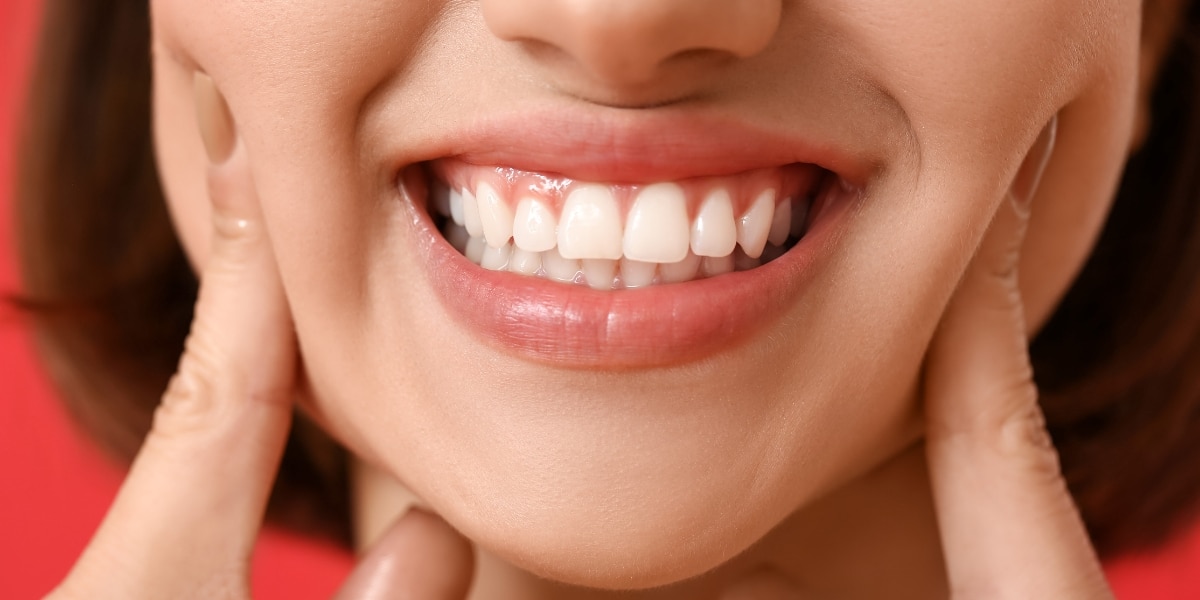Have you ever wondered if your gums are truly healthy? Many people focus on brushing their teeth but often overlook the health of their gums. Healthy gums play a crucial role in maintaining your overall oral health. They not only protect your teeth but also serve as a barrier against harmful bacteria. Recognizing what healthy gums look like can be the first step toward preventing gum disease.
Healthy gums should be firm, pink, and fit snugly around your teeth. But what happens if they aren’t? Noticing subtle changes, like swelling or bleeding, can alert you to potential problems. This blog will guide you through the characteristics of healthy gums, signs of trouble, and practical steps to keep your gums in top shape. Let’s dive in and learn how to protect your gums and maintain a healthy smile!
Characteristics of Healthy Gums
Healthy gums are essential for a strong, radiant smile. But what exactly do healthy gums look like? Recognizing the visual cues of gum health helps ensure you’re keeping them in optimal condition.
- Color: Healthy gums should be a consistent light pink, though darker skin tones may naturally have deeper pigmentation.
- Texture: Gums should feel firm to the touch and adhere tightly around your teeth without puffiness.
- No Bleeding: When you brush or floss, healthy gums should not bleed. Bleeding can indicate inflammation or early signs of gum disease.
- No Discomfort: You should not experience any soreness, tenderness, or swelling.
Warning Signs of Gum Problems
Gums don’t always show obvious problems, but certain symptoms signal that something’s wrong. Catching these signs early can save your oral health from long-term damage.
- Redness and Puffiness: Gums that are red, swollen, or tender indicate inflammation, often linked to gingivitis.
- Bleeding Gums: Regular bleeding during brushing or flossing is a red flag for gum disease.
- Chronic Bad Breath: Persistent bad breath could signal underlying gum issues or bacterial infections.
- Receding Gums: Gum recession exposes the roots of your teeth, increasing sensitivity and the risk of decay.
- Sensitivity: Pain when eating hot, cold, or sugary foods may be a symptom of gum disease or tooth exposure from receding gums.
Maintaining Gum Health with Daily Care
Good oral hygiene is the best way to keep your gums in top shape. Consistency and proper techniques are essential in protecting your gums from disease.
- Brush Twice Daily: Use a soft-bristled toothbrush and fluoride toothpaste. Brush for at least two minutes, focusing on the gum line.
- Floss Daily: Flossing removes plaque and debris that brushing misses. Use a gentle technique, curving the floss around each tooth and sliding it under the gumline.
- Mouthwash: Antiseptic mouthwash helps reduce bacteria and maintain gum health. Choose one that targets plaque and gingivitis.
How Nutrition Affects Your Gums?
What you eat plays a huge role in your oral health. A balanced diet not only benefits your overall health but also supports healthy gums.
- Vitamin C: This essential vitamin helps repair and regenerate tissues, keeping your gums strong. Foods like oranges, strawberries, and bell peppers are rich in Vitamin C.
- Calcium: Calcium strengthens teeth and bones, which directly impacts gum health. Dairy products, leafy greens, and almonds are great sources of calcium.
- Avoid Sugary Snacks: Sugary foods and drinks promote plaque buildup, which leads to gum inflammation and cavities.
Common Gum Conditions to Watch For
Gum disease is common but preventable with the right care. Two primary conditions affect gum health: gingivitis and periodontitis.
- Gingivitis: This is the mildest form of gum disease. Symptoms include red, swollen, and bleeding gums. It’s reversible with proper care.
- Periodontitis: Left untreated, gingivitis can progress to periodontitis, a more severe gum infection that damages the soft tissue and bone supporting your teeth.
- Plaque and Tartar Buildup: Plaque hardens into tartar over time, irritating the gums and leading to inflammation and disease.
When to Visit Your Dentist for Gum Health?
Sometimes, professional dental care is necessary to keep your gums healthy. Knowing when to see a dentist can make a significant difference in preventing more serious issues.
- Persistent Bleeding: If your gums bleed regularly, even after improving your oral hygiene, it’s time to see a dentist.
- Severe Pain or Discomfort: Ongoing gum pain could indicate a more serious condition requiring professional treatment.
- Noticeable Gum Recession: If your gums are pulling away from your teeth, exposing the roots, you should seek immediate care.
Healthy gums are the foundation of a bright smile and strong teeth. By recognizing the signs of healthy and unhealthy gums, practicing good oral hygiene, and maintaining a balanced diet, you can prevent gum problems before they escalate. Remember, consistency is key, and regular dental check-ups are your best defense against gum disease. Taking care of your gums now will not only keep your smile looking great but also protect your overall health for years to come.




